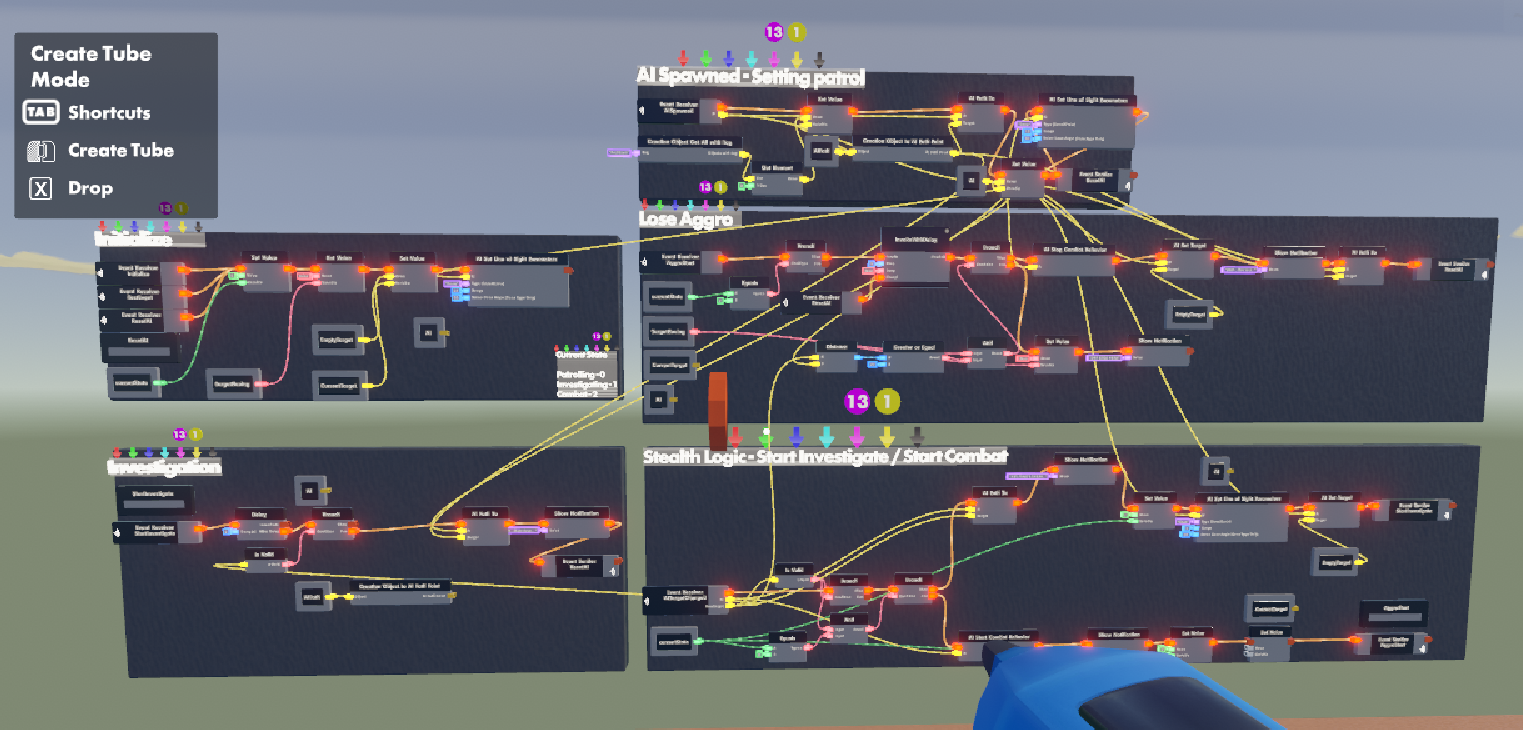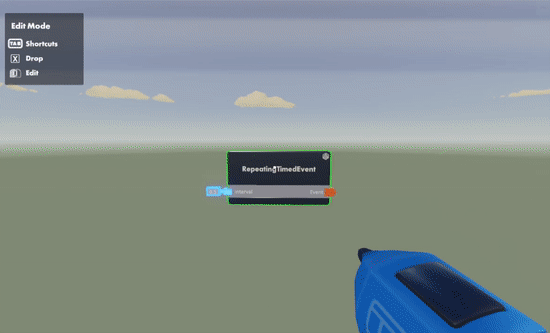In the beginning of May, Radiant Blur gave an overview of our plans for bringing AIs for use in player-created rooms. Soon after we released the first part of this (Phase 1) and y’all have already made some incredible stuff with the few tools at your disposal. As we ventured into the unexplored territories of Phase 2, we also started to see our efforts on making Circuits V2 start to mature and to get an appetite for a real test of its new capabilities. This was a big part of the reason for the start of our Maker Pen Workshops and its first project: Tomb Heist!
We decided this was the perfect opportunity to surface the Circuits V2 system to players as it both constrained the problem (we’re only shipping a small segment of the total potential of Circuits V2 instead of having to port over everything from Circuits V1 right off the bat), and also immediately provided new functionality that would have been impossible to implement in Circuits V1. This gave Circuits V2 a new focusing lens that has enabled us to work on it with much clearer goals and has also unlocked functionality for player-created AI that we thought would take us much longer to achieve.
Circuits V2 AI in Tomb Heist!
To focus the Circuits V2 efforts in the Tomb Heist! Project we decided we wanted the AIs in this mini quest to behave fundamentally different from the regular AIs that we have in the rest of our RRO quests. We wanted to use existing enemies that players could already spawn in their rooms, but have them do something beyond just rushing at players and attacking blindly. We wanted them to be more akin to tactical adventure games like Metal Gear or Tomb Raider, but most importantly, all the new behavior had to be completely done in Circuits V2. We’re calling this the “stealth” AI logic and it loosely adds the following functionality to enemies:
AIs have patrol routes that they follow. These can have branching paths.
AIs have adjusted line-of-sight parameters allowing us to tune how easily they can spot you.
AIs can spot you or hear a noise nearby and go investigate the disturbance. If they spot you again, they’ll attack.
If an AI doesn’t see you for a while, they’ll stop attacking and go back to patrolling.
There are many things on this list that weren’t possible for our AIs to do even for us in the Unity engine, but by focusing our Circuits V2 efforts on these goals and enabling that system to interact with the innards of our AI system, we’ve come up with a bunch of features that unlocked our ability to do this and potentially much more with AIs in creators’ rooms.
AI Path Points
These gadgets allow you to define patrol routes for your AIs. They can branch, encompass areas, have pauses, etc.
AI Behavior Chips & Events
There are a bunch of new Circuits V2 chips and events specifically designed to influence AI behavior in your games, get their properties, etc.
Chips:
Path To: Path to a position, enemy, player, or other object in the world.
Look At / Rotate: Turn to look at something or in a direction.
Start/Stop combat behavior: Start or stop attacking.
Check or assign current health, current target, speed, etc.
Set patrol paths.
Set Line of Sight parameters: How wide and long their vision cone is.
Events:
Spawn/Death: Detect when an AI has spawned or died and who killed them.
Target Changed: When an AI has acquired a new target or lost its previous one.
Patrol state: When a patrol or pathing instruction has been completed or canceled.
Sound heard: When an AI is alerted by weapon or object impacts around it
Circuit Boards & Control Panels
Along with a multitude of Circuits V2 chips and events that are direct ports of Circuits V1 functionality (e.g. Add, Random number, etc.) and some stuff that is completely new (e.g. variables, lists, custom events), we’re implementing a much more robust way of packaging circuit logic for ease of use and replication.
One of these is Circuit Boards V2, which allows you to package up events, variables, logic, and an arbitrary number of inputs and outputs into a single chip that you can then connect to other things, clone, etc.
The other is the Control Panel. This is similar to a Circuit Board, but it’s tied to a specific object in the world. In time we’ll want most things that you can spawn in your rooms to have a Control Panel you can access and from there be able to modify its functionality or connect it to other circuits. In the past all logic in circuits has been global (i.e. part of the general logic of the room), but Control Panels will enable you to tie specific logic to specific objects. So, for example, you could have a group of enemies that behave like the normal quest enemies, another that has some more intelligent behavior or moves differently, and then a companion pet that follows you around and helps you fight. All based on the same basic AI, but changing the logic in their individual Control Panels.
As we progress along the phases of AI for creators, we’ll likely expand the amount of internal AI logic that is exposed through Control Panels so you can modify more about how our AIs work as well as create new tools to expand on that logic or create entirely new behaviors.
We hope this sneak preview of what we’re working on gets you all as excited as we are for the next generation of adventures in creator rooms that I’m sure will be blowing our minds as soon as these features hit the game!






